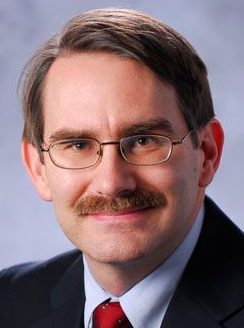Comment: COVID-19 Toll on Local Health Care Workers Brutal
 Monday, January 25, 2021 at 6:20AM
Monday, January 25, 2021 at 6:20AM By Wilson Sofley, MD, FACP/Special to the Anderson Observer
The COVID-19 virus is having a profound impact on the health care workers who have been dealing with it for almost a year now. When I refer to health care workers, I am referring to the entire health care team, the physicians, physician assistants, nurse practitioners, nurses, respiratory therapists, physical and occupational therapists, speech therapists, social workers, nursing assistants, receptionists, housekeeping staff, IT staff, administrators, and many others.
physicians, physician assistants, nurse practitioners, nurses, respiratory therapists, physical and occupational therapists, speech therapists, social workers, nursing assistants, receptionists, housekeeping staff, IT staff, administrators, and many others.
When the pandemic first started our first reaction to it was fear of the unknown. We did not know how contagious it was or how to treat it. We knew that we would soon be seeing patients with COVID-19 and quickly made plans about how we would accomplish this mission. What we did not know at the time was how long the pandemic would last and how it would change all of our lives.
When it started, we had the fear of becoming infected with COVID-19 just like everyone else did. We knew we would be working closely with highly contagious patients and that there was a national shortage of PPE. Many members of our team have high-risk health care conditions themselves or have a family member living with them who has a high-risk condition. We had to be constantly vigilant in order to prevent becoming infected and bringing it home to our loved ones. We still have to do this but the development of the COVID-19 vaccine has gone a long way to help with this fear.
Treating COVID-19 patients also has caused a lot of physical stress to us. We wear masks for our entire workday and wear full PPE for every interaction with a patient who has COVID-19. The PPE is hot and uncomfortable. The N-95 masks fit very tightly against the face and leave marks when they are removed. Some of us have developed facial rashes and skin issues related to this. The PPE must be put on for even the simplest of patient interactions, such as helping a patient adjust the bed or giving them the remote control when they drop it. It increases the time required to do most of the daily job tasks. The shifts are also often longer due to staffing shortages and increased patient volumes. The staff is caring for more patients than usual and the patients are much sicker than in the past.
We are also having to deal with the constant stress of staffing shortages. The health care staff gets sick, just like everyone else. Many of them are ill due to COVID-19. Some of the staff who were close to retirement have retired early due to the stress of treating COVID-19 patients. Others have resigned. Some have become traveling nurses so they could increase their incomes.
The hospital census is also the highest it has been in years. This results in more work for those of us who remain here. The main problem in creating more inpatient beds to treat the patients from this surge is not always just space. It is often a lack of people to staff the new treatment areas.
This has resulted in patients having to be held in the ER until a bed opens up. The ER then gets full and patients then have to be treated in hallways. As of the time I am writing this AnMed’s inpatient census of COVID-19 patients is 141. That means almost 50% of all patients who are hospitalized here are hospitalized due to COVID-19. That has never happened with any other illness. In the medical field we train for mass casualty exercises. Many of us have been through mass casualty events before, both in civilian and military life. Those events usually only last a few days. This is lasting for months with no signs of getting better anytime soon. It also impacts the patients who are being treated for non-COVID issues. All of our resources are stretched thin at this point.
We also have to deal with local and national shortages of supplies. Everyone is aware of the problems with PPE shortages. This has improved but we are still reusing N-95 masks that were designed and intended to be used just once before the pandemic hit. We also have had shortages of medications like Remdesivir which is used to treat COVID-19 patients. That means that at times it was not available to everyone who could have benefited from it. Medications which are used in the ICU to help sedate people who are on ventilators are also in short supply. Even oxygen is an issue. Some patients have had their discharges delayed due to a lack of oxygen available to use at home. This creates extra stress on the system and the health care team members who are trying to get the critical resources.
We are also having the stress of dealing with the conspiracy theorists on social media. Early on in the pandemic some people were refusing to believe it was real as they did not personally know anyone who had died of COVID-19. We were told that we were calling everything COVID-19 so that we would get paid more money. We were also told that if we just would use the right medication that they saw discussed on a social media post then we could cure these patients.
Our years of training and experience, countless hours spent studying the most recent scientific data about COVID-19 treatments, and talking to experts in the field takes a backseat to the Facebook posts they saw. Unfortunately, the entire issue became very politicized. This has made it harder for us to get the message of the importance of wearing masks out to the community. We still have many who refuse to wear a mask. Some leaders tell us that South Carolinians are doing great. All we have to do is go to the store or a restaurant to see that many people are not consistently following the guidelines. The city of Anderson has a mask ordinance but it is rarely enforced. People are having family gatherings, parties, church services, and sports events with no masks.
The upstate of South Carolina is one of the worst areas in the nation for COVID-19 infections when the data is adjusted for the size of the population. When the public wants to know what they can do to support us the answer is simple, follow the CDC guidelines. Wear a mask, socially distance, and wash your hands. This will help us to get the pandemic under control. The vaccine will also help but it will take many months to vaccinate enough people to have an impact.
In addition to the issues listed above we have the same stressors everyone else has. We have sick family members, funerals, decisions about the best way to educate our children, limited social contact, etc. When this is combined with the stressful work environment it can be overwhelming. I am personally aware of very experienced nurses who have gone home in tears due to the issues we face. Others have had panic attacks, depression, and PTSD.
We are seeing people die on a scale we have never experienced before. Many of the patients are in the hospital for several weeks and we get very attached to them. Some of them are our friends and co-workers. We see them struggling to breath and then finally getting intubated. We help them in their communication with their family members because they are too weak to do it alone. Unfortunately, we also watch many of them die. I personally had 4 of my long-term patients die last week. Three of them died from COVID-19. AnMed now has a full-time on-site counselor to help employees deal with these issues.
It seems to be like the movie Ground Hog Day, except each day is just a little worse than the day before. We just get up each morning, put on a smile to hide the pain, and go back to work.
Dr. C. Wilson Sofley Jr, MD, is a board certified internist in Anderson, South Carolina. He is affiliated with AnMed Health Medical Center.
 Editor |
Editor |  Post a Comment |
Post a Comment | 



Reader Comments